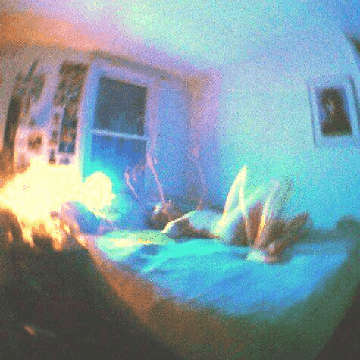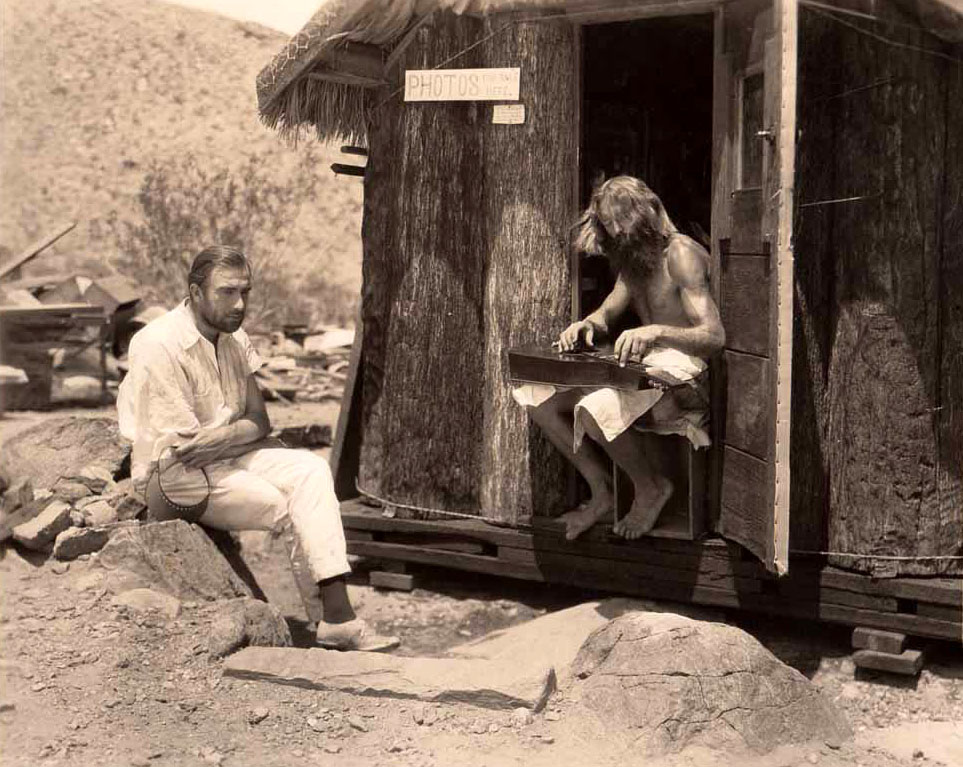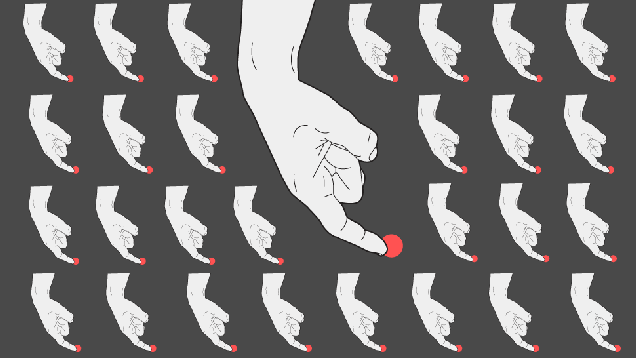The dolphin who loved me: the Nasa-funded project that went wrong
In the 1960s, Margaret Lovatt was part of a Nasa-funded project to communicate with dolphins. Soon she was living with 'Peter' 24 hours a day in a converted house. Christopher Riley reports on an experiment that went tragically wrong
Christopher Riley
The Observer, Saturday 7 June 2014

Marine girl: Margaret Lovatt at the Dolphin House on St Thomas
Photograph: courtesy Lilly Estate
Like most children, Margaret Howe Lovatt grew up with stories of talking animals. "There was this book that my mother gave to me called Miss Kelly," she remembers with a twinkle in her eye. "It was a story about a cat who could talk and understand humans and it just stuck with me that maybe there is this possibility."
Unlike most children, Lovatt didn't leave these tales of talking animals behind her as she grew up. In her early 20s, living on the Caribbean island of St Thomas, they took on a new significance. During Christmas 1963, her brother-in-law mentioned a secret laboratory at the eastern end of the island where they were working with dolphins. She decided to pay the lab a visit early the following year. "I was curious," Lovatt recalls. "I drove out there, down a muddy hill, and at the bottom was a cliff with a big white building."
Lovatt was met by a tall man with tousled hair, wearing an open shirt and smoking a cigarette. His name was Gregory Bateson, a great intellectual of the 20th century and the director of the lab. "Why did you come here?" he asked Lovatt.
"Well, I heard you had dolphins," she replied, "and I thought I'd come and see if there was anything I could do or any way I could help…" Unused to unannounced visitors and impressed by her bravado, Bateson invited her to meet the animals and asked her to watch them for a while and write down what she saw. Despite her lack of scientific training, Lovatt turned out to be an intuitive observer of animal behaviour and Bateson told her she could come back whenever she wanted.
"There were three dolphins," remembers Lovatt. "Peter, Pamela and Sissy. Sissy was the biggest. Pushy, loud, she sort of ran the show. Pamela was very shy and fearful. And Peter was a young guy. He was sexually coming of age and a bit naughty."
The lab's upper floors overhung a sea pool that housed the animals. It was cleaned by the tide through openings at each end. The facility had been designed to bring humans and dolphins into closer proximity and was the brainchild of an American neuroscientist, Dr John Lilly. Here, Lilly hoped to commune with the creatures, nurturing their ability to make human-like sounds through their blow holes.
Lilly had been interested in connecting with cetaceans since coming face to face with a beached pilot whale on the coast near his home in Massachusetts in 1949. The young medic couldn't quite believe the size of the animal's brain – and began to imagine just how intelligent the creature must have been, explains Graham Burnett, professor of the history of science at Princeton and author of The Sounding of the Whale. "You are talking about a time in science when everybody's thinking about a correlation between brain size and what the brain can do. And in this period, researchers were like: 'Whoa… big brain huh… cool!'"

Tripper and flipper: Dr John Lilly, who started experimenting with LSD during the project.
Photograph: Lilly Estate
At every opportunity in the years that followed, John Lilly and his first wife, Mary, would charter sailboats and cruise the Caribbean, looking for other big-brained marine mammals to observe. It was on just such a trip in the late 1950s that the Lillys came across Marine Studios in Miami – the first place to keep the bottlenose dolphin in captivity.
Up until this time, fishermen on America's east coast, who were in direct competition with dolphins for fish, had considered the animals vermin. "They were know as 'herring hogs' in most of the seafaring towns in the US," says Burnett. But here, in the tanks of Marine Studios, the dolphins' playful nature was endearingly on show and their ability to learn tricks quickly made it hard to dislike them.
Here, for the first time, Lilly had the chance to study the brains of live dolphins, mapping their cerebral cortex using fine probes, which he'd first developed for his work on the brains of rhesus monkeys. Unable to sedate dolphins, as they stop breathing under anaesthetic, the brain-mapping work wasn't easy for either animals or scientists, and the research didn't always end well for the marine mammals. But on one occasion in 1957, the research would take a different course which would change his and Mary's lives for ever.
Now aged 97, Mary still remembers the day very clearly. "I came in at the top of the operating theatre and heard John talking and the dolphin would go: 'Wuh… wuh… wuh' like John, and then Alice, his assistant, would reply in a high tone of voice and the dolphin would imitate her voice. I went down to where they were operating and told them that this was going on and they were quite startled."
Perhaps, John reasoned, this behaviour indicated an ambition on the dolphins' part to communicate with the humans around them. If so, here were exciting new opportunities for interspecies communication. Lilly published his theory in a book in 1961 called Man and Dolphin. The idea of talking dolphins, eager to tell us something, captured the public's imagination and the book became a bestseller.
Man and Dolphin extrapolated Mary Lilly's initial observations of dolphins mimicking human voices, right through to teaching them to speak English and on ultimately to a Cetacean Chair at the United Nations, where all marine mammals would have an enlightening input into world affairs, widening our perspectives on everything from science to history, economics and current affairs.
Lilly's theory had special significance for another group of scientists – astronomers. "I'd read his book and was very impressed," says Frank Drake, who had just completed the first experiment to detect signals from extraterrestrial civilisations using a radio telescope at Green Bank in West Virginia. "It was a very exciting book because it had these new ideas about creatures as intelligent and sophisticated as us and yet living in a far different milieu." He immediately saw parallels with Lilly's work, "because we [both] wanted to understand as much as we could about the challenges of communicating with other intelligent species." This interest helped Lilly win financial backing from Nasa and other government agencies, and Lilly opened his new lab in the Caribbean in 1963, with the aim of nurturing closer relationships between man and dolphin.
A few months LATER, in early 1964, Lovatt arrived. Through her naturally empathetic nature she quickly connected with the three animals and, eager to embrace John Lilly's vision for building an interspecies communication bridge, she threw herself into his work, spending as much time as possible with the dolphins and carrying out a programme of daily lessons to encourage them to make human-like sounds. While the lab's director, Gregory Bateson, concentrated on animal-to-animal communication, Lovatt was left alone to pursue Lilly's dream to teach the dolphins to speak English. But even at a state-of-the-art facility like the Dolphin House, barriers remained. "Every night we would all get in our cars and pull the garage door down and drive away," remembers Lovatt. "And I thought: 'Well there's this big brain floating around all night.' It amazed me that everybody kept leaving and I just thought it was wrong."
Lovatt reasoned that if she could live with a dolphin around the clock, nurturing its interest in making human-like sounds, like a mother teaching a child to speak, they'd have more success. "Maybe it was because I was living so close to the lab. It just seemed so simple. Why let the water get in the way?" she says. "So I said to John Lilly: 'I want to plaster everything and fill this place with water. I want to live here.'"
The radical nature of Lovatt's idea appealed to Lilly and he went for it. She began completely waterproofing the upper floors of the lab, so that she could actually flood the indoor rooms and an outdoor balcony with a couple of feet of water. This would allow a dolphin to live comfortably in the building with her for three months.
Lovatt selected the young male dolphin called Peter for her live-in experiment. "I chose to work with Peter because he had not had any human-like sound training and the other two had," she explains. Lovatt would attempt to live in isolation with him six days a week, sleeping on a makeshift bed on the elevator platform in the middle of the room and doing her paperwork on a desk suspended from the ceiling and hanging over the water. On the seventh day Peter would return to the sea pool downstairs to spend time with the two female dolphins at the lab – Pamela and Sissy.

'If I was sitting with my legs in the water, he'd come up and look at the back of my knee for a long time':
Margaret with Peter. Photograph: courtesy Lilly Estate
By the summer of 1965, Lovatt's domestic dolphinarium was ready for use. Lying in bed, surrounded by water that first night and listening to the pumps gurgling away, she remembers questioning what she was doing. "Human people were out there having dinner or whatever and here I am. There's moonlight reflecting on the water, this fin and this bright eye looking at you and I thought: 'Wow, why am I here?' But then you get back into it and it never occurred to me not to do it. What I was doing there was trying to find out what Peter was doing there and what we could do together. That was the whole point and nobody had done that."
Audio recordings of Lovatt's progress, meticulously archived on quarter-inch tapes at the time, capture the energy that Lovatt brought to the experiment – doggedly documenting Peter's progress with her twice-daily lessons and repeatedly encouraging him to greet her with the phrase 'Hello Margaret'. "'M' was very difficult," she remembers. "My name. Hello 'M'argaret. I worked on the 'M' sound and he eventually rolled over to bubble it through the water. That 'M', he worked on so hard."
For Lovatt, though, it often wasn't these formal speech lessons that were the most productive. It was just being together which taught her the most about what made Peter tick. "When we had nothing to do was when we did the most," she reflects. "He was very, very interested in my anatomy. If I was sitting here and my legs were in the water, he would come up and look at the back of my knee for a long time. He wanted to know how that thing worked and I was so charmed by it."
Carl Sagan, one of the young astronomers at Green Bank, paid a visit to report back on progress to Frank Drake. "We thought that it was important to have the dolphins teach us 'Dolphinese', if there is such a thing," recalls Drake. "For example we suggested two dolphins in each tank not able to see each other – and he should teach one dolphin a procedure to obtain food – and then see if it could tell the other dolphin how to do the same thing in its tank. That was really the prime experiment to be done, but Lilly never seemed able to do it."
Instead, he encouraged Lovatt to press on with teaching Peter English. But there was something getting in the way of the lessons. "Dolphins get sexual urges," says the vet Andy Williamson, who looked after the animals' health at Dolphin House. "I'm sure Peter had plenty of thoughts along those lines."
"Peter liked to be with me," explains Lovatt. "He would rub himself on my knee, or my foot, or my hand. And at first I would put him downstairs with the girls," she says. But transporting Peter downstairs proved so disruptive to the lessons that, faced with his frequent arousals, it just seemed easier for Lovatt to relieve his urges herself manually.
"I allowed that," she says. "I wasn't uncomfortable with it, as long as it wasn't rough. It would just become part of what was going on, like an itch – just get rid of it, scratch it and move on. And that's how it seemed to work out. It wasn't private. People could observe it."
For Lovatt it was a precious thing, which was always carried out with great respect. "Peter was right there and he knew that I was right there," she continues. "It wasn't sexual on my part. Sensuous perhaps. It seemed to me that it made the bond closer. Not because of the sexual activity, but because of the lack of having to keep breaking. And that's really all it was. I was there to get to know Peter. That was part of Peter."
Innocent as they were, Lovatt's sexual encounters with Peter would ultimately overshadow the whole experiment when a story about them appeared in Hustler magazine in the late 1970s. "I'd never even heard ofHustler," says Lovatt. "I think there were two magazine stores on the island at the time. And I went to one and looked and I found this story with my name and Peter, and a drawing."

Sexploitation: Hustler magazine's take on the story in the late 1970s.
Photograph: Lilly Estate
Lovatt bought up all the copies she could find, but the story was out there and continues to circulate to this day on the web. "It's a bit uncomfortable," she acknowledges. "The worst experiment in the world, I've read somewhere, was me and Peter. That's fine, I don't mind. But that was not the point of it, nor the result of it. So I just ignore it."
Something else began to interrupt the study. Lilly had been researching the mind-altering powers of the drug LSD since the early 1960s. The wife of Ivan Tors, the producer of the dolphin movie Flipper, had first introduced him to it at a party in Hollywood. "John and Ivan Tors were really good friends," says Ric O'Barry of the Dolphin Project (an organisation that aims to stop dolphin slaughter and exploitation around the world) and a friend of Lilly's at the time. "Ivan was financing some of the work on St Thomas. I saw John go from a scientist with a white coat to a full blown hippy," he remembers.
For the actor Jeff Bridges, who was introduced to Lilly by his father Lloyd, Lilly's self-experimentation with LSD was just part of who he was. "John Lilly was above all an explorer of the brain and the mind, and all those drugs that expand our consciousness," reflects Bridges. "There weren't too many people with his expertise and his scientific background doing that kind of work."
In the 1960s a small selection of neuroscientists like John Lilly were licensed to research LSD by the American government, convinced that the drug had medicinal qualities that could be used to treat mental-health patients. As part of this research, the drug was sometimes injected into animals and Lilly had been using it on his dolphins since 1964, curious about the effect it would have on them.

Margaret Lovatt today. Photograph: Matt Pinner/BBC
Much to Lilly's annoyance, nothing happened. Despite his various attempts to get the dolphins to respond to the drug, it didn't seem to have any effect on them, remembers Lovatt. "Different species react to different pharmaceuticals in different ways," explains the vet, Andy Williamson. "A tranquilliser made for horses might induce a state of excitement in a dog. Playing with pharmaceuticals is a tricky business to say the least."
Injecting the dolphins with LSD was not something Lovatt was in favour of and she insisted that the drug was not given to Peter, which Lilly agreed to. But it was his lab, and they were his animals, she recalls. And as a young woman in her 20s she felt powerless to stop him giving LSD to the other two dolphins.
While Lilly's experimentation with the drug continued, Lovatt persevered with Peter's vocalisation lessons and grew steadily closer to him. "That relationship of having to be together sort of turned into really enjoying being together, and wanting to be together, and missing him when he wasn't there," she reflects. "I did have a very close encounter with – I can't even say a dolphin again – with Peter."
By autumn 1966, Lilly's interest in the speaking-dolphin experiment was dwindling. "It didn't have the zing to it that LSD did at that time," recalls Lovatt of Lilly's attitude towards her progress with Peter. "And in the end the zing won."

The dolphinarium on St Thomas. Photograph: Lilly Estate
Lilly's cavalier attitude to the dolphins' welfare would eventually be his downfall, driving away the lab's director, Gregory Bateson, and eventually causing the funding to be cut. Just as Lovatt and Peter's six-month live-in experiment was concluding, it was announced that the lab would be closed.
Without funding, the fate of the dolphins was in question. "I couldn't keep Peter," says Lovatt, wistfully. "If he'd been a cat or a dog, then maybe. But not a dolphin." Lovatt's new job soon became the decommissioning of the lab and she prepared to ship the dolphins away to Lilly's other lab, in a disused bank building in Miami. It was a far cry from the relative freedom and comfortable surroundings of Dolphin House.
At the Miami lab, held captive in smaller tanks with little or no sunlight, Peter quickly deteriorated, and after a few weeks Lovatt received news.
"I got that phone call from John Lilly," she recalls. "John called me himself to tell me. He said Peter had committed suicide."
Ric O'Barry corroborates the use of this word. "Dolphins are not automatic air-breathers like we are," he explains. "Every breath is a conscious effort. If life becomes too unbearable, the dolphins just take a breath and they sink to the bottom. They don't take the next breath." Andy Williamson puts Peter's death down to a broken heart, brought on by a separation from Lovatt that he didn't understand. "Margaret could rationalise it, but when she left, could Peter? Here's the love of his life gone."
"I wasn't terribly unhappy about it," explains Lovatt, 50 years on. "I was more unhappy about him being in those conditions [at the Miami lab] than not being at all. Nobody was going to bother Peter, he wasn't going to hurt, he wasn't going to be unhappy, he was just gone. And that was OK. Odd, but that's how it was."
In the decades which followed, John Lilly continued to study dolphin-human communications, exploring other ways of trying to talk to them – some of it bizarrely mystical, employing telepathy, and some of it more scientific, using musical tones. No one else ever tried to teach dolphins to speak English again.
Instead, research has shifted to better understanding other species' own languages. At the Seti (Search for Extraterrestrial Intelligence) Institute, founded by Frank Drake to continue his work on life beyond Earth, Drake's colleague Laurance Doyle has attempted to quantify the complexity of animal language here on our home planet.
"There is still this prejudice that humans have a language which is far and away above any other species' qualitatively," says Doyle. "But by looking at the complexity of the relationship of dolphin signals to each other, we've discovered that they definitely have a very high communication intelligence. I think Lilly's big insight was how intelligent dolphins really are."
Margaret Howe Lovatt stayed on the island, marrying the photographer who'd captured pictures of the experiment. Together they moved back into Dolphin House, eventually converting it into a family home where they brought up three daughters. "It was a good place," she remembers. "There was good feeling in that building all the time."
In the years that followed the house has fallen into disrepair, but the ambition of what went on there is still remembered. "Over the years I have received letters from people who are working with dolphins themselves," she recalls. "They often say things like: 'When I was seven I read about you living with a dolphin, and that's what started it all for me.'"
Peter is their "Miss Kelly", she explains, remembering her own childhood book about talking animals. "Miss Kelly inspired me. And in turn the idea of my living with a dolphin inspired others. That's fun. I like that."
Christopher Riley is the producer and director of The Girl Who Talked to Dolphins, which will premiere at the Sheffield International Documentary Festival on 11 June, and is on BBC4 on 17 June at 9pm



















